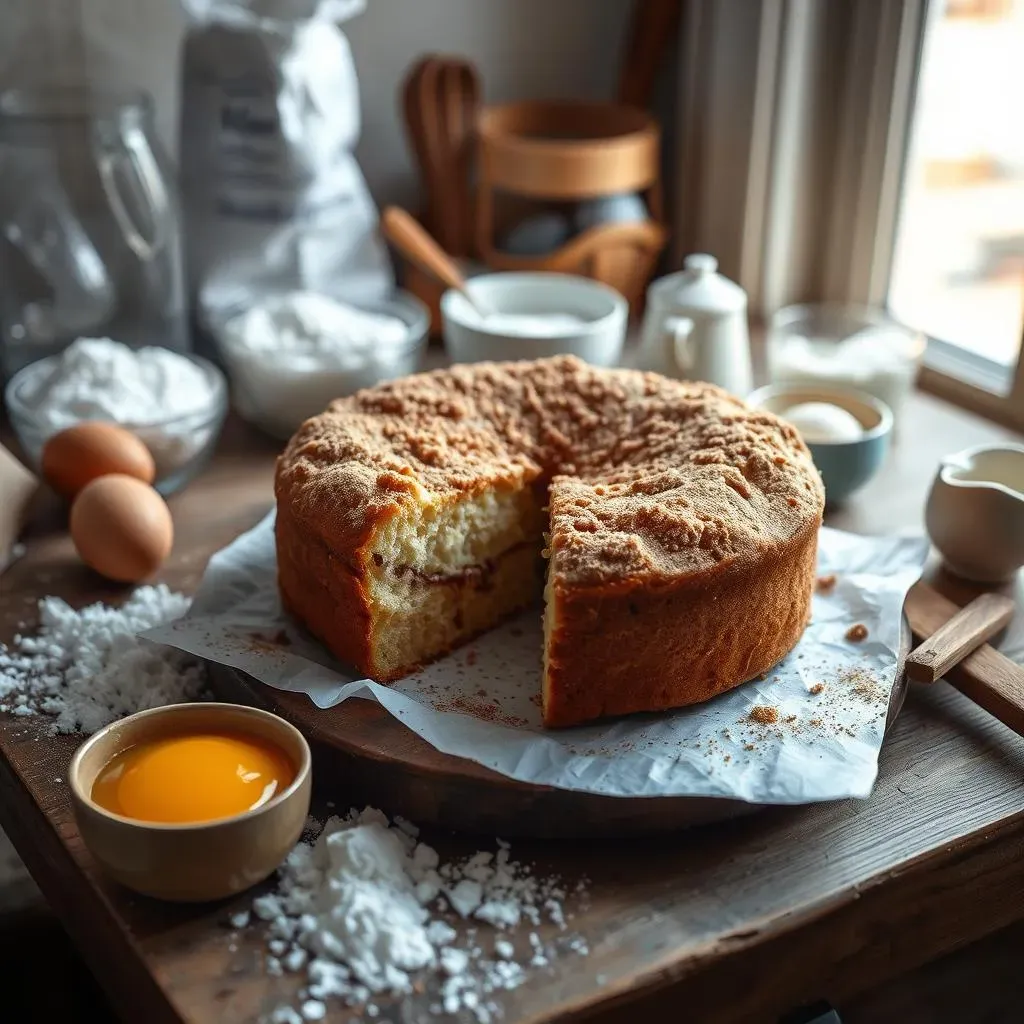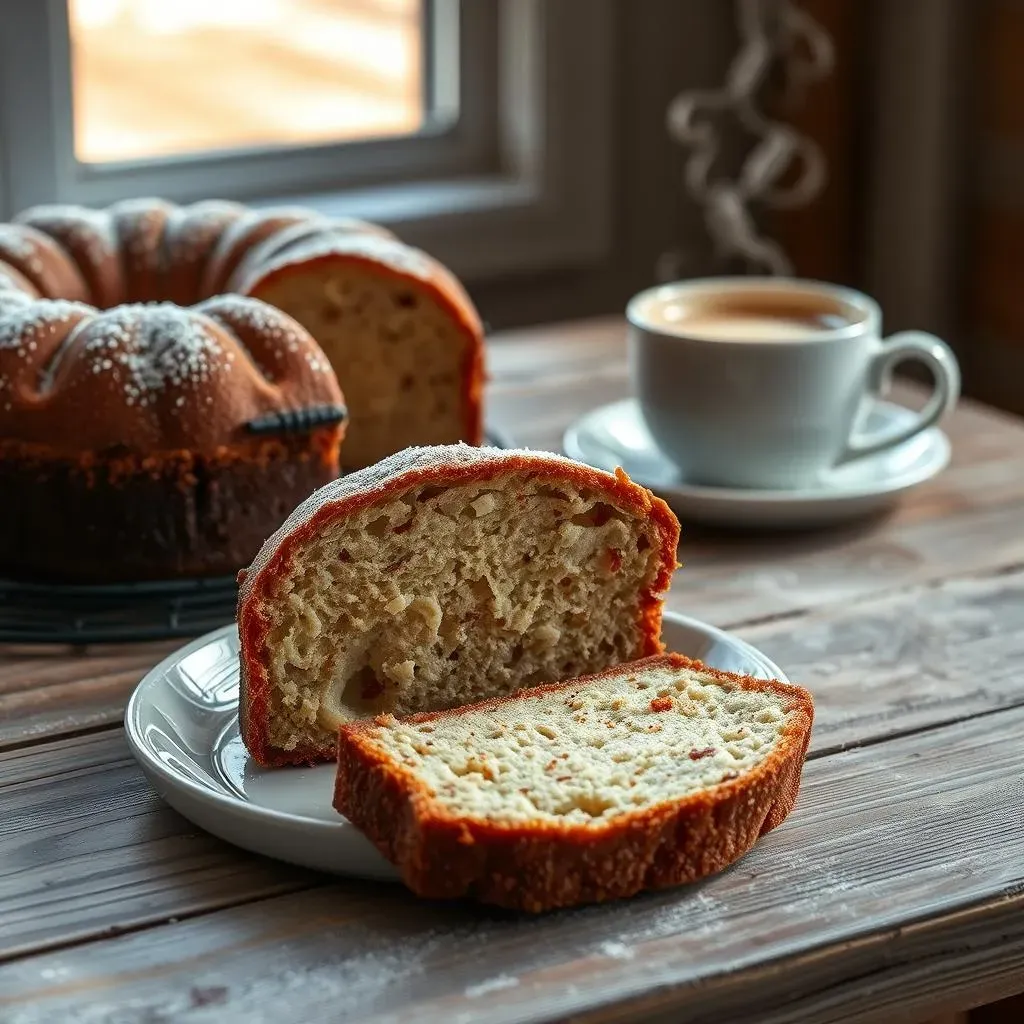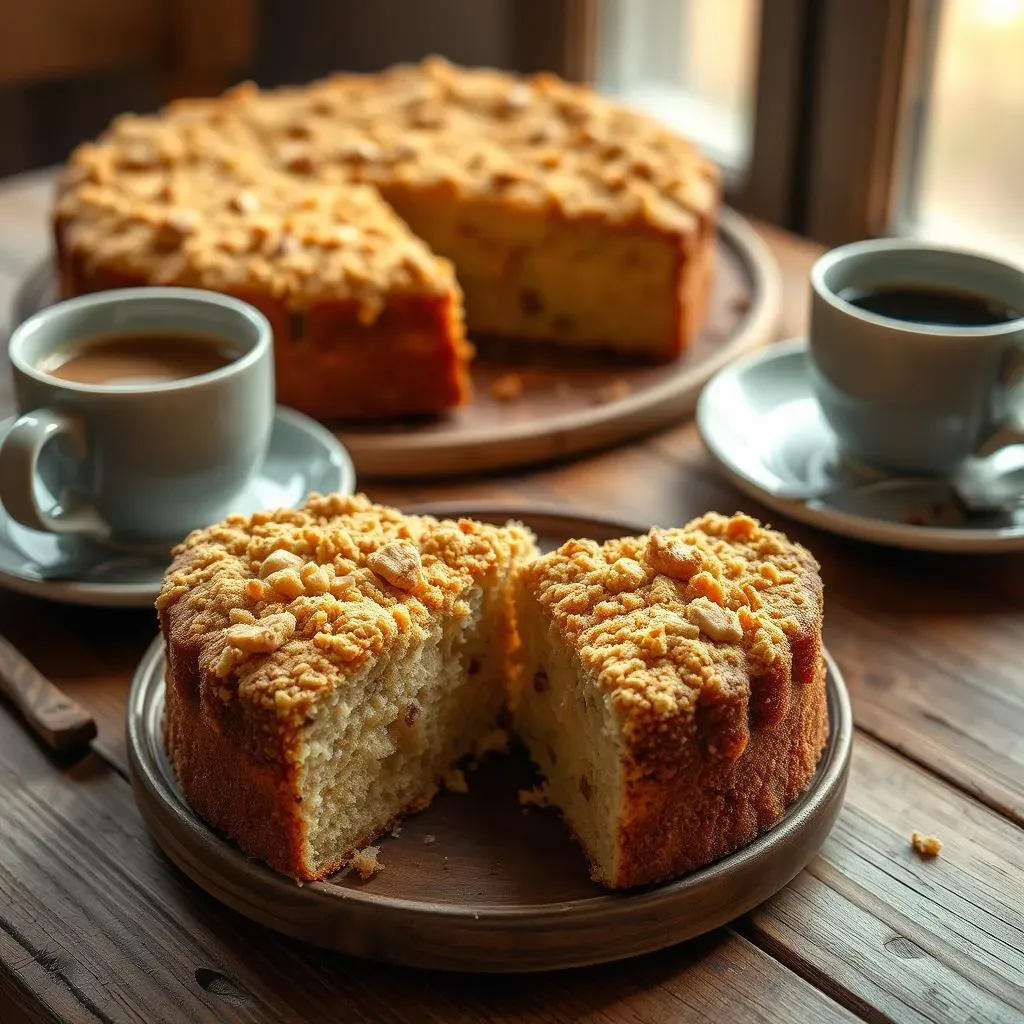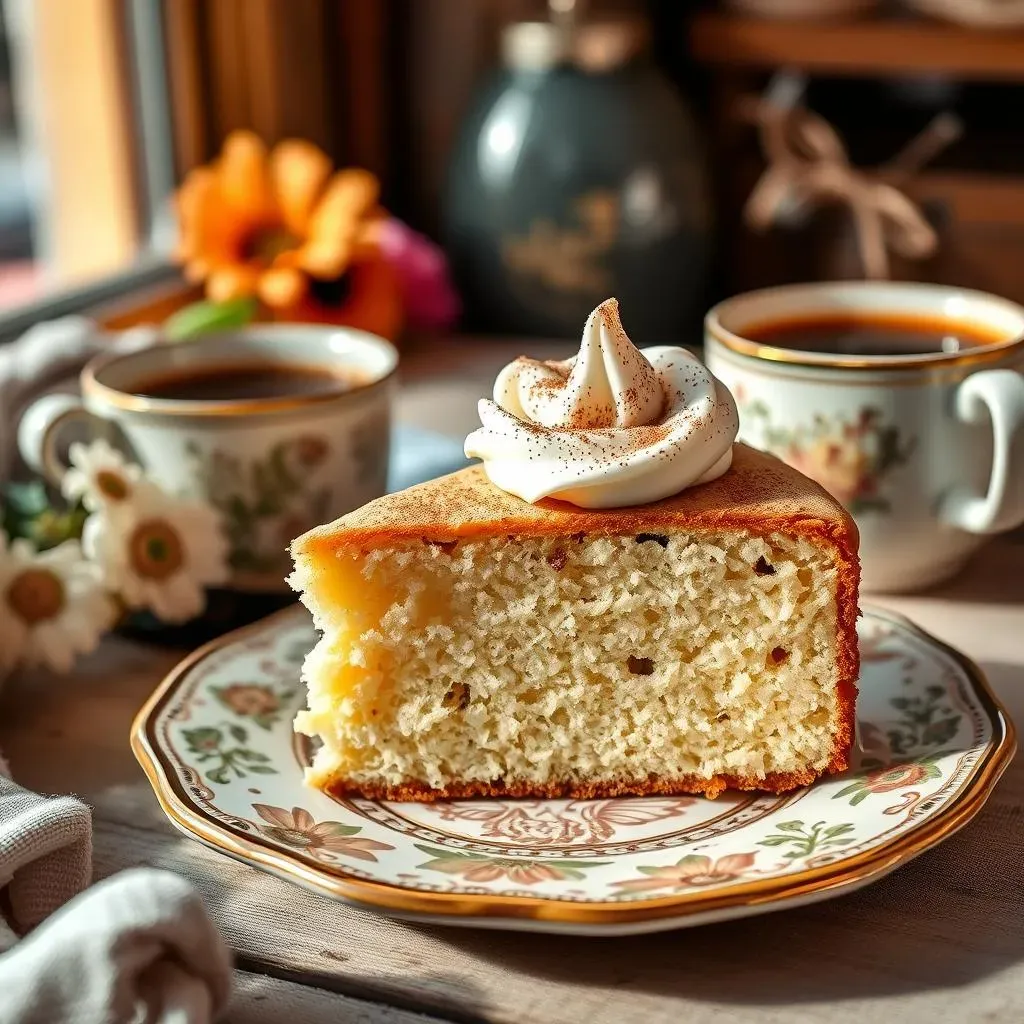Table of Contents
There's something undeniably comforting about a slice of warm coffee cake, especially when it boasts the rich, tangy goodness of sour cream. My grandma, bless her heart, used to whip up a sour cream coffee cake every Sunday, and the aroma alone was enough to drag us out of bed. It wasn't just a cake; it was a tradition, a memory baked into every single bite. Those Sunday mornings inspired me to share my take on sour cream coffee cake recipes. This isn't just another recipe roundup. We're diving deep. We'll explore the essential ingredients that make a sour cream coffee cake sing, the clever variations that let you customize it to your heart's content, and the step-by-step techniques that guarantee a perfect bake every time. Got a crumb topping craving? We've got you covered. Wondering if you can swap Greek yogurt for sour cream? Let's find out. From nailing the cinnamon swirl to mastering the art of the glaze, we're leaving no crumb unturned. So, grab your apron, preheat that oven, and let's bake some memories!
Decoding Sour Cream Coffee Cake Recipes: Ingredients & Variations

Decoding Sour Cream Coffee Cake Recipes: Ingredients & Variations
The Cake Base: Key Players
Let's break down what makes a sour cream coffee cake, well, a sour cream coffee cake. It all starts with the basics: flour, sugar, eggs, butter (or oil), and a leavening agent like baking powder and baking soda. But the real magic ingredient? You guessed it – sour cream. The sour cream not only adds a subtle tang that balances the sweetness, but it also contributes to the cake's incredibly moist and tender crumb. It's like a secret weapon for baking perfection.
Don't skimp on quality here. Use full-fat sour cream for the best results. Low-fat versions just don't deliver the same richness and moisture. And speaking of fat, the type of fat you use matters too. Melted butter will give you a richer, more flavorful cake, while oil will result in a slightly lighter texture. It really depends on your preference. I'm a butter kind of guy, myself. I feel it gives it more flavor.
Ingredient | Role | Substitution |
|---|---|---|
Sour Cream | Moisture, Tang, Tenderness | Greek Yogurt (full-fat) |
Butter | Flavor, Richness | Vegetable Oil |
Baking Powder/Soda | Leavening | Ensure freshness for best rise |
Beyond the Basics: Flavor Boosters & Swirl Sensations
Once you've nailed the cake base, it's time to get creative with flavor boosters and swirl sensations. Cinnamon is the classic choice for a coffee cake swirl, and for good reason. Its warm, spicy notes complement the sweetness of the cake beautifully. But don't be afraid to experiment! Try adding a touch of nutmeg, cardamom, or even a pinch of ground cloves to your cinnamon sugar mixture.
And let's not forget about the nuts! Pecans, walnuts, or even toasted almonds add a delightful crunch and nutty flavor that takes your coffee cake to the next level. Fold them into the batter, sprinkle them on top of the swirl, or use them in a crumb topping. The possibilities are endless! A good tip is to toast the nuts before adding them to the cake, it will give them a better flavor.
StepbyStep: Mastering the Sour Cream Coffee Cake Recipe

StepbyStep: Mastering the Sour Cream Coffee Cake Recipe
Getting Started: Prep Work is Key
Alright, let's get down to brass tacks. Before you even think about cracking an egg, there's some essential prep work to tackle. First, make sure all your ingredients are at room temperature. This is crucial for proper emulsification, which basically means everything will blend together smoothly and evenly. Cold ingredients can seize up and result in a lumpy batter, and nobody wants that. Take the butter and eggs out of the fridge about an hour before you start baking.
Next, grease and flour your baking pan. This prevents the cake from sticking and ensures a clean release. I like to use a springform pan for coffee cakes because it makes it super easy to remove the cake without damaging it. But a regular cake pan will work just fine, too. Just make sure to line the bottom with parchment paper for extra insurance. Preheat your oven to 350°F (175°C). Oven temperature is key, be sure to use an oven thermometer to check for fluctuations.
Building the Cake: Batter, Swirl, Repeat
Now for the fun part: building the cake! In a large bowl, cream together the butter and sugar until light and fluffy. This step is important because it incorporates air into the batter, which contributes to the cake's light and airy texture. Beat in the eggs one at a time, followed by the vanilla extract. Be sure to scrape down the sides of the bowl occasionally to ensure everything is evenly combined.
In a separate bowl, whisk together the flour, baking powder, baking soda, and salt. Gradually add the dry ingredients to the wet ingredients, alternating with the sour cream, beginning and ending with the dry ingredients. Mix until just combined. Be careful not to overmix, as this can develop the gluten in the flour and result in a tough cake. Remember, gentle is key! Pour half of the batter into the prepared pan. Sprinkle with half of the cinnamon sugar mixture. Pour the remaining batter over the top and sprinkle with the remaining cinnamon sugar mixture. "A watched pot never boils, but a carefully layered coffee cake always rises to the occasion."
- Room temperature ingredients = happy batter
- Grease and flour = cake release success
- Don't overmix!
Baking to Perfection: Time & Temperature
Pop that beauty into the preheated oven and bake for 45-55 minutes, or until a wooden skewer inserted into the center comes out clean. Start checking for doneness around the 45-minute mark, as baking times can vary depending on your oven. If the top of the cake starts to brown too quickly, you can tent it with aluminum foil to prevent it from burning.
Once the cake is done, remove it from the oven and let it cool in the pan for 10-15 minutes before inverting it onto a wire rack to cool completely. This prevents the cake from sticking to the pan and allows it to cool evenly. And resist the urge to slice into it while it's still warm! I know it's tempting, but trust me, it's worth the wait. A fully cooled cake is easier to slice and has a better texture.
Step | Action | Why |
|---|---|---|
1 | Preheat Oven to 350°F (175°C) | Ensures even baking |
2 | Combine Wet and Dry Ingredients Separately | Prevents overmixing |
3 | Cool Completely Before Slicing | Improves texture and sliceability |
Troubleshooting Your Sour Cream Coffee Cake: Tips & Tricks

Troubleshooting Your Sour Cream Coffee Cake: Tips & Tricks
Why Did My Cake Sink in the Middle?
Ah, the dreaded sunken cake! This is a common baking woe, but fear not, it's usually fixable. The most likely culprit? Underbaking. Even if a skewer comes out "clean," it could still be a little gooey in the very center. Next time, try baking it for another 5-10 minutes, keeping a close eye on it to prevent burning. Another potential cause is opening the oven door too frequently during baking. This can cause the oven temperature to fluctuate, leading to a collapse. Resist the urge to peek!
Also, ensure your leavening agents are fresh! Baking powder and baking soda lose their potency over time, so if they're past their expiration date, they might not provide enough lift. Finally, overmixing the batter can also contribute to a sunken cake. Remember, gentle is key! Mix until just combined, and no more.
Dry Cake SOS: Moisture-Saving Missions
A dry coffee cake is a sad coffee cake. The good news is, there are several ways to combat dryness. First, double-check your measurements! Too much flour is a common cause of dry baked goods. Use a kitchen scale for the most accurate results. And speaking of flour, make sure you're not packing it into your measuring cup. Gently spoon it in and level it off with a knife.
Another tip is to add a little extra sour cream to the batter. The extra moisture will help keep the cake tender. And don't overbake it! Overbaking is a surefire way to dry out any cake. Start checking for doneness a few minutes before the recipe suggests, and remove it from the oven as soon as a skewer comes out clean. A little secret? Brushing the top of the warm cake with melted butter or a simple syrup can also help lock in moisture.
Taming the Crumb Topping: Achieving Golden Perfection
A crumbly, golden-brown topping is the crowning glory of a great coffee cake. But sometimes, it can be tricky to get it just right. If your crumb topping is too dry and powdery, try adding a tablespoon or two of melted butter or oil. This will help it clump together and create those desirable crumbs. On the other hand, if your topping is too wet and greasy, add a little more flour or oats to the mixture.
Also, make sure your butter is cold when you make the crumb topping. Cold butter will create a flakier, more tender crumb. Use a pastry blender or your fingertips to cut the butter into the dry ingredients until the mixture resembles coarse crumbs. And don't overcrowd the topping! Sprinkle it evenly over the cake, leaving some space between the crumbs for air to circulate. This will help them brown evenly and prevent them from steaming.
Problem | Possible Cause | Solution |
|---|---|---|
Sunken Cake | Underbaking, Oven Door Opened Too Frequently | Bake Longer, Avoid Opening Oven |
Dry Cake | Too Much Flour, Overbaking | Measure Accurately, Reduce Baking Time |
Poor Crumb Topping | Incorrect Butter Temperature | Use Cold Butter |
Serving & Storing Your Perfect Sour Cream Coffee Cake

Serving & Storing Your Perfect Sour Cream Coffee Cake
The Art of the Slice: Serving Suggestions
you've baked this masterpiece, now it's time to serve it! A warm slice of sour cream coffee cake is pure bliss, especially when paired with a steaming cup of coffee or tea. But don't limit yourself to just the basics. A dollop of whipped cream or a scoop of vanilla ice cream takes it to a whole new level. And if you're feeling fancy, a drizzle of caramel sauce or a sprinkle of toasted nuts adds a touch of elegance. "Life is what you bake of it, so add a little extra sweetness with every slice."
Consider the occasion, too! This cake is perfect for a casual brunch with friends, a cozy afternoon treat, or even a dessert after a special dinner. Cut into smaller squares, it's also a great addition to a dessert platter or a potluck gathering. And let's not forget about breakfast! A slice of coffee cake is a delightful way to start the day, especially on a lazy weekend morning. I like to warm the cake up a little bit before serving it, it gives it an extra kick.
Keeping it Fresh: Proper Storage Techniques
So, you've managed to resist devouring the entire cake in one sitting (impressive!). Now, let's talk about how to store it properly to keep it fresh and delicious. The key is to prevent it from drying out. An airtight container is your best friend here. Store the cake at room temperature for up to 3 days. If you live in a humid climate, or if you want to extend its shelf life, you can store it in the refrigerator for up to a week.
Just be aware that refrigerating the cake can slightly dry it out, so be sure to wrap it tightly in plastic wrap or foil before placing it in the container. And if you want to enjoy it warm, simply pop a slice in the microwave for a few seconds before serving. For longer storage, you can freeze the cake for up to 2-3 months. Wrap it tightly in plastic wrap and then in foil, or place it in a freezer-safe bag. Thaw it overnight in the refrigerator before serving. I find that freezing it in individual slices makes it easier to grab a quick treat whenever the craving strikes.
- Airtight container = freshness
- Room temp: 3 days
- Fridge: up to a week
- Freezer: 2-3 months
Reheating & Reviving: Bringing Back the Magic
Even with the best storage techniques, sometimes a coffee cake can lose a bit of its magic. But don't despair! There are several ways to revive a slightly stale cake. A quick zap in the microwave can work wonders, but be careful not to overheat it, or it will become rubbery. Another option is to wrap the cake in a damp paper towel and microwave it for a few seconds. The moisture will help rehydrate the cake and restore its tenderness.
If you have a little more time, you can wrap the cake in foil and warm it in a low oven (around 300°F or 150°C) for about 10-15 minutes. This will gently warm the cake without drying it out. And if all else fails, you can always turn it into bread pudding! Cubed coffee cake makes a delicious and decadent bread pudding base. Just soak it in a custard mixture and bake until golden brown and bubbly. Problem solved!
Storage Method | Duration | Tips |
|---|---|---|
Room Temperature | Up to 3 days | Airtight container |
Refrigerator | Up to 1 week | Wrap tightly |
Freezer | 2-3 months | Double wrap for best results |
The Sweet Ending: Your Sour Cream Coffee Cake Journey
So, you've explored the ins and outs of sour cream coffee cake recipes, from mastering the basic bake to experimenting with exciting variations. Whether you're a seasoned baker or just starting out, remember that the best recipes are the ones you make your own. Don't be afraid to tweak the ingredients, adjust the sweetness, and add your personal touch. Serve it warm, share it with loved ones, and savor every delicious bite. After all, a sour cream coffee cake isn't just a dessert; it's a celebration of simple pleasures and shared moments. Happy baking!